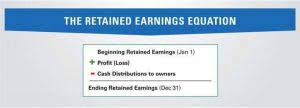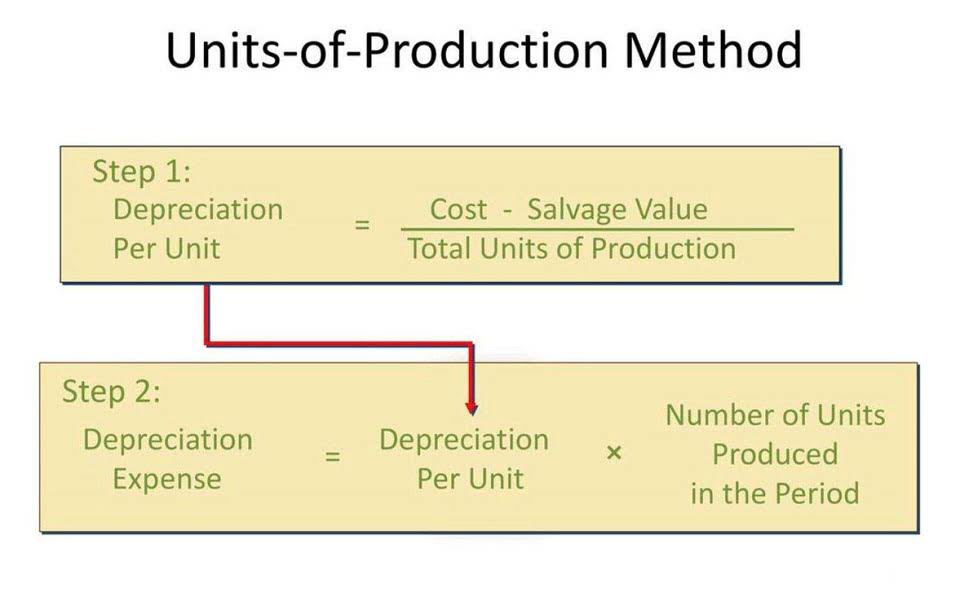Then, mark the next line, with the words ‘Retained Earnings Statement’. Finally, provide the year for which such a statement is being prepared in the third line (For the Year Ended 2019 in this case). Retained earnings can be used to pay off existing outstanding debts or loans that your business owes. Retained earnings are like a running tally of how profitable your business has been since it first started up.
Access Exclusive Templates
The purpose of releasing a statement of retained earnings is to improve market and investor confidence in the organization. Instead, the retained earnings are redirected, often as a reinvestment within the organization. The prior period balance can be found on the opening balance sheet, whereas the net income is linked to the current period income statement. From there, the company’s net income—the “bottom line” of the income statement—is added to the prior period balance. But while the first scenario is a cause for concern, a negative balance could also result from an aggressive dividend payout, such as a dividend recapitalization in a leveraged buyout (LBO).
How Do You Prepare a Retained Earnings Statement?
Non-cash items such as write-downs or impairments and stock-based compensation also affect the account. For example, during the period from September 2016 through September 2020, Apple Inc.’s (AAPL) stock price rose from around $28 to around $112 per share. During the same period, the total earnings per share (EPS) was $13.61, while the total dividend paid out by the company was $3.38 per share. However, company owners can use them to buy new assets like equipment or inventory. Much like any other part of a business, there can be downsides to retained earnings.
What is the Retained Earnings Formula?
On the other hand, high-growth companies usually pay relatively smaller dividends or no dividend at all. On the other hand, investors prefer securities that pay a constant rate of dividend periodically, which reduces the risk of investing in the shares. Therefore, the company must maintain a balance between declaring dividends and retaining profits for expansion. Strong financial and accounting acumen is required when assessing the financial potential of a company. Up-to-date financial reporting helps you keep an eye on your business’s financial health so you can identify cash flow issues before they become a problem. Profits generally refer to the money a company earns after subtracting all costs and expenses from its total revenues.
How confident are you in your long term financial plan?
It shows a business has consistently generated profits and retained a good portion of those earnings. It also indicates that a company has more funds to reinvest back into the future growth of the business. Most software offers ready-made report templates, including a statement of retained earnings, which you can customize to fit your company’s needs. Shareholders, analysts and potential investors use the statement to assess a company’s profitability and dividend payout potential. Examples of these items include sales revenue, cost of goods sold, depreciation, and other operating expenses.
What is a statement of retained earnings?
Cash dividends are a cash outflow from the company, reducing its cash balance. Usually, companies issue dividends at a specific rate on a fixed schedule. Despite this, companies often stick to this schedule because missing dividend payments can indicate financial woes. Retained earnings are affected by an increase or decrease in the net income and amount of dividends paid to the stockholders. Thus, any item that leads to an increase or decrease in the net income would impact the retained earnings balance.
- If a young company like this can afford to distribute dividends, investors will be pleasantly surprised.
- While a t-shirt can remain essentially unchanged for a long period of time, a computer or smartphone requires more regular advancement to stay competitive within the market.
- Thinkorswim mobile and Schwab Mobile requires a wireless signal or mobile connection.
- To naïve investors who think the appropriation established a fund of cash, this second entry will produce an apparent increase in RE and an apparent improved ability to pay a dividend.
Retained Earnings vs. Net Income: What is the Difference?
The decision to retain earnings or to distribute them among shareholders is usually left to the company management. However, it can be challenged by the shareholders through a majority vote because they are the real owners of the company. If a company receives a net income of $40,000, the retained earnings for that month will also grow by $40,000. Also, your retained earnings over a certain period might not always provide good info. For instance, say they look at your changes in retained earnings over the years.
We can cross-check each of the formula figures used in the retained earnings calculation with the other financial statements. It’s important to note that retained earnings are cumulative, meaning the ending retained earnings balance for one accounting period becomes the beginning retained https://accounting-services.net/ earnings balance for the next period. A statement of retained earnings details the changes in a company’s retained earnings balance over a specific period, usually a year. Retained earnings refer to the money your company keeps for itself after paying out dividends to shareholders.
Prolonged periods of declining sales, increased expenses, or unsuccessful business ventures can lead to negative retained earnings. Revenue is the money generated by a company during a period but before operating expenses and overhead costs are deducted. In some industries, revenue is called gross sales because the gross figure is calculated before any deductions. Retained earnings are also called earnings surplus and represent reserve money, which is available to company management for reinvesting back into the business. When expressed as a percentage of total earnings, it is also called the retention ratio and is equal to (1 – the dividend payout ratio).
When lenders and investors evaluate a business, they often look beyond monthly net profit figures and focus on retained earnings. This is because retained earnings provide a more comprehensive overview of the company’s financial stability and long-term growth potential. Let’s say that in March, business continues roaring along, and you make another $10,000 in profit. Since you’re thinking of keeping that money for reinvestment in the business, you forego a cash dividend and decide to issue a 5% stock dividend instead. First, you have to figure out the fair market value (FMV) of the shares you’re distributing.
Retained earnings are also the key component of shareholder’s equity that helps a company determine its book value. Finally, add the current net income/earnings figure, listed on your Q3 income statement/profit and loss, to the retained earnings figure for Q3. The normal balance in a profitable corporation’s Retained Earnings account is a credit balance. This is logical since the revenue accounts have credit balances and expense accounts have debit balances. If the balance in the Retained Earnings account has a debit balance, this negative amount of retained earnings may be described as deficit or accumulated deficit.
These funds may also be referred to as retained profit, accumulated earnings, or accumulated retained earnings. Often, these retained funds are used to make a payment on any debt obligations or are reinvested into the company to promote growth and development. Retained Earnings on the balance sheet measures the accumulated profits kept by a company to date since inception, rather than issued as dividends. Likewise, both the management as well as the stockholders would want to utilize surplus net income towards the payment of high-interest debt over dividend payout. You can either distribute surplus income as dividends or reinvest the same as retained earnings. Also, keep in mind that the equation you use to get shareholders’ equity is the same you use to get your working capital.
Since stock dividends are dividends given in the form of shares in place of cash, these lead to an increased number of shares outstanding for the company. That is, each shareholder now holds an additional number of shares of the company. As stated earlier, dividends are paid out of retained earnings of the company. Both cash and stock dividends lead to a decrease in the retained earnings of the company. Retained earnings refer to the residual net income or profit after tax which is not distributed as dividends to the shareholders but is reinvested in the business.
As stated earlier, retained earnings at the beginning of the period are actually the previous year’s retained earnings. This can be found in the balance of the previous year, under the shareholder’s equity section on the liability side. Since in our example, December 2019 is the current year for which retained earnings need to be calculated, December 2018 would be the previous year.
Reinvesting profits back into the business can help it expand and become more successful over time. An older company will have had more time in which to compile more retained earnings. Yes, retained earnings carry over to the next year if they have not been used up by the company from paying down debt or investing back in the company. Beginning retained earnings are then included on the balance sheet for the following year. Retained earnings (RE) are calculated by taking the beginning balance of RE and adding net income (or loss) and then subtracting out any dividends paid.
Companies will also usually issue a percentage of all their stock as a dividend (i.e. a 5% stock dividend means you’re giving away 5% of the company’s equity). Your bookkeeper or accountant may also be able to create monthly retained earnings statements for you. These statements report changes to your retained earnings over the course of an accounting period. When a company consistently retains part of its earnings and demonstrates a history of profitability, it’s a good indicator of financial health and growth potential. This can make a business more appealing to investors who are seeking long-term value and a return on their investment.
It’s a measure of the resources your small business has at its disposal to fund day-to-day operations. Retained are part of your total assets, though—so you’ll include them alongside your other liabilities if you use the equation above. Calculating retained earnings after a stock dividend involves a few extra steps to figure out the actual amount of dividends you’ll be distributing. Yes, having high retained earnings is considered a positive sign for a company’s financial performance. Retained earnings, on the other hand, refer to the portion of a company’s net profit that hasn’t been paid out to its shareholders as dividends. Retained earnings are reported in the shareholders’ equity section of a balance sheet.
To simplify your retained earnings calculation, opt for user-friendly accounting software with comprehensive reporting capabilities. There are plenty of options out there, including QuickBooks, Xero, and FreshBooks. Retained earnings are also known as accumulated earnings, earned surplus, undistributed profits, or retained bookkeeping services rancho cucamonga income. Retained earnings act as a reservoir of internal financing you can use to fund growth initiatives, finance capital expenditures, repay debts, or hire new staff. A maturing company may not have many options or high-return projects for which to use the surplus cash, and it may prefer handing out dividends.











